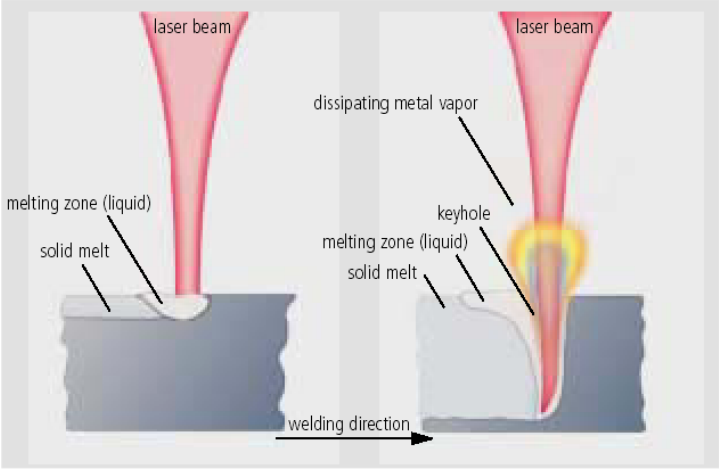What is Laser Welding?
Laser welding is the process of utilising the lasers’ high-intensity power and heat to fuse or join together, being able to work on metals and thermoplastics. The welding process works differently for thick or thin materials. The welding process on thin materials utilises the high welding speed of a laser machine, completing the job in a short time. While the process for thick materials can produce narrow and deep welds between the square edges.
Laser Welding Advantages
- Materials are processed without the need of physical contact at high speeds
- Extremely narrow seams are produced by the laser. Seams produced have a large depth-width ratio with minimal distortion.
- Laser welding machine keeps control of the energy at a optimal level resulting in a small heat-affected zone. This results on a low thermal load on the material
- Laser welding allows for tons of flexibility, enabling you to weld in areas that are difficult to access
- The narrow and uniform welding surface made by the laser leave little splash formations. This reduces the amount of rework and post processing needed for the product.
- The laser machine can easily control the laser and allows the entire process of welding to be automatically done, requiring little human intervention
Conduction Limited Welding:
The material is melted through the absorption and thermal conduction of the laser radiation. The melted material then forms a pool of liquid that will immediately cool off and solidify. This solidified pool of the melted material forms the welded point that connects and holds the pieces together. This method allows for a low penetration depth of the laser and is mainly used for the welding of components with thin walls.


Keyhole Welding:
This method concentrates the laser into a pinpoint spot that will completely focus the radiation until the material reaches the evaporation temperature. This process creates the keyhole, generally 1.5 to 2 times the size of the focused spot. The keyhole increases the absorption rate due to the repeated reflection. The vapor pressure prevents the keyhole from closing up, this acts against the hydrostatic pressure of the surrounding melt and the surface tension.